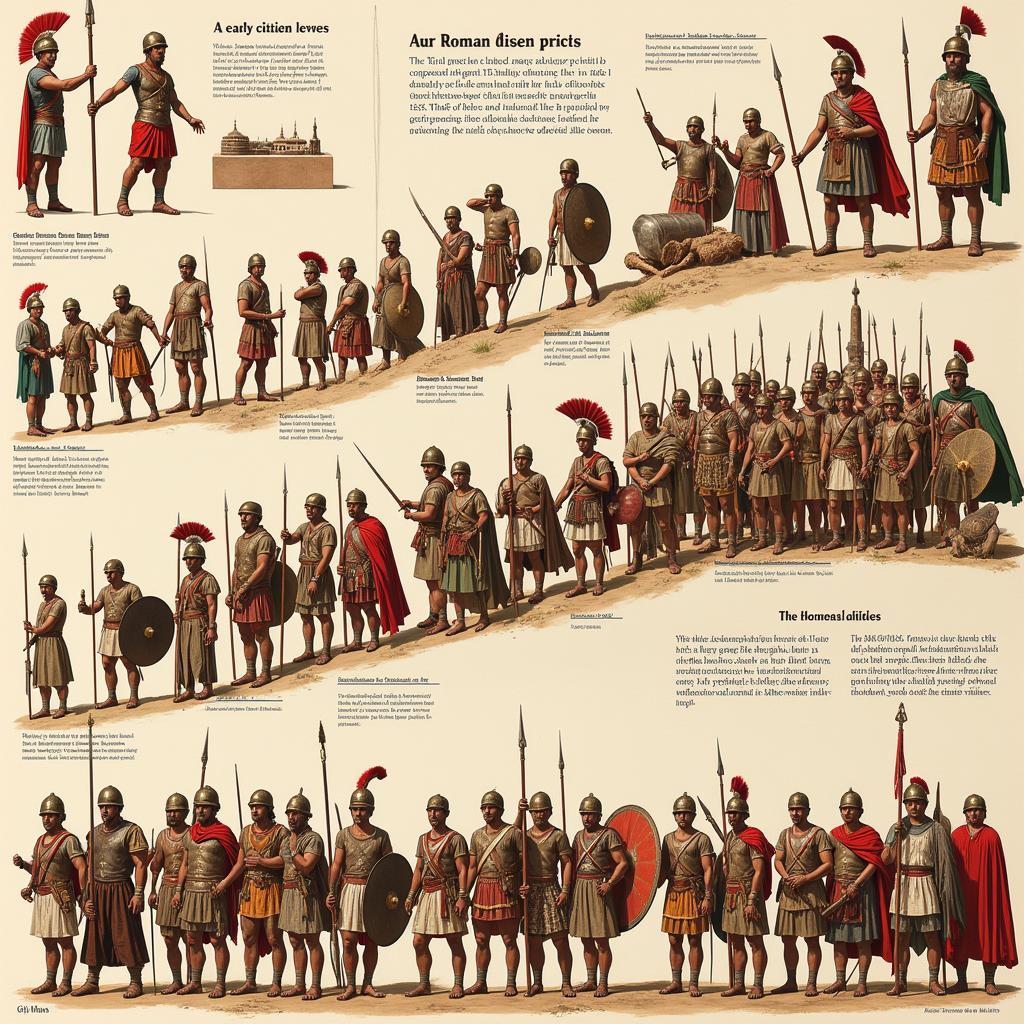Researching how something changes over time is central to understanding historical trends and events. This guide will equip you with the knowledge and tools to craft a compelling and insightful history research paper focused on change.
Choosing a Topic That Highlights Transformation
When selecting a topic for a “change over time” history paper, it’s crucial to pick a subject with inherent dynamism. This could be the evolution of an idea, a cultural practice, a technology, or even a geographical region.
For example, instead of a broad topic like “The Roman Empire,” you might consider “The Evolution of Roman Military Tactics” or “The Changing Role of Women in Roman Society.” This approach allows you to delve into the nuances of how and why change occurred.
 Roman Military Tactics Through the Ages
Roman Military Tactics Through the Ages
Crafting a Research Question Focused on Change
Your research question is the compass guiding your paper. For a “change over time” paper, frame your question to explicitly address the element of transformation. Consider using phrases like:
- “In what ways did… change between [date] and [date]?”
- “What factors contributed to the shift in… during the [period]?”
- “How did the evolution of… impact [another aspect]?”
For instance, you could ask, “How did the invention of the printing press change the dissemination of knowledge in 16th century Europe?” This question immediately focuses your research on identifying and analyzing the changes brought about by the printing press.
Unveiling the “Why” Behind the Change
Identifying the forces driving change is at the heart of your analysis. Was it technological innovation, shifting social norms, economic factors, political upheaval, or a confluence of multiple elements?
Examining primary sources from the period—such as letters, diaries, government documents, or artifacts—can provide invaluable insights into the motivations and perspectives of those who lived through these transformations.
Analyzing Continuity and Discontinuity
While your focus is on change, don’t overlook the aspects that remained constant. Identifying continuities can offer a more nuanced understanding of the period and highlight the complexities of historical change.
For example, while the printing press revolutionized book production, the Catholic Church retained significant control over knowledge dissemination by censoring certain texts. Recognizing this continuity adds depth to the narrative of change.
Connecting the Past to the Present
As you delve into your research, consider the lasting impact of the change you are examining. How did it shape subsequent events, influence the present, or continue to resonate in modern times?
For example, you could connect the invention of the printing press to the rise of mass literacy, the Protestant Reformation, and even the digital information age we live in today. Drawing these connections demonstrates a deeper understanding of the historical significance of the change you’ve researched.
Structuring Your Paper for Clarity and Impact
Organize your paper chronologically or thematically, ensuring a logical flow that guides the reader through the progression of change you’re analyzing. Use clear topic sentences, transitions, and evidence from your research to support your arguments.
If you’re looking for research paper topics for middle schoolers, high school, or college students, exploring change over time provides rich opportunities for investigation. Consider using a research topic generator to brainstorm potential ideas. For more in-depth research, exploring research term paper topics may be beneficial.
Conclusion: Embracing the Dynamic Nature of History
Writing a compelling history research paper about change over time requires you to go beyond merely recounting events. By asking probing questions, analyzing the forces at play, and drawing connections to the present, you can craft a paper that illuminates the dynamic nature of history and its impact on the world we live in today.
Expert Insight: “History is not static; it’s a tapestry woven with threads of continuity and change,” says Dr. Emily Carter, Professor of History at the University of Cambridge. “By focusing on the ‘how’ and ‘why’ of historical transformation, we gain a deeper understanding of the forces that have shaped our world.”
No. 31, Alley 142/7, P. Phú Viên, Bồ Đề, Long Biên, Hà Nội, Việt Nam.